

| Osh, Kyrgyzstan's Silk Road city | |
Osh (Kyrgyzstan), April 19th 2013
|
|
|
|
|
We are slowly travelling eastwards over the famous Silk Road. It is not our specific goal to travel this ancient trade route, but it is just the most convenient way for us to travel to Kyrgyzstan. We started already months ago in some of the old Iranian cities that were part of the Silk Road and travelled since than via cities like Merv (Turkmenistan) and Bukhara, Samarkand and Kokand in Uzbekistan to Osh in Kyrgyzstan. The Silk Road is a dream for a growing group of travellers, and some of them even take some months off from work to travel over (a part of) this ancient and nostalgic road. For centuries, approximately from the 2nd to the 13th century AD, the Silk Road was an ever changing trade route between the eastern and western civilisations. The main and famous route started in present Syria and Turkey and went over the icy mountains of Central Asia and through the immense hot deserts of China to the east. But there were also side tracks, connecting the main route with other parts of the world like Iraq, Iran, India and Russia. The Silk Road was never a specific fixed road. The trade caravans used ever changing routes, depending on wars, plagues and natural disasters. It was seldom the case that trade caravans travelled the whole route from the east to the west or the other way around. Traders specialised themselves in specific routes and traded their products with other traders at the end of their route, from where the products were transported further east or westwards by other traders. The settlements on the main routes where the trading took place, often developed to prosperous cities where trading, transhipment and storage took place. These were also the places where some kind of a banking system developed and where traders recovered from the often tough journeys through harsh environments. The cities in Central Asia, approximately half way on the Silk Road, are often seen as the most interesting ones, because these were the places were traders from the east and west directly met each other. |
|
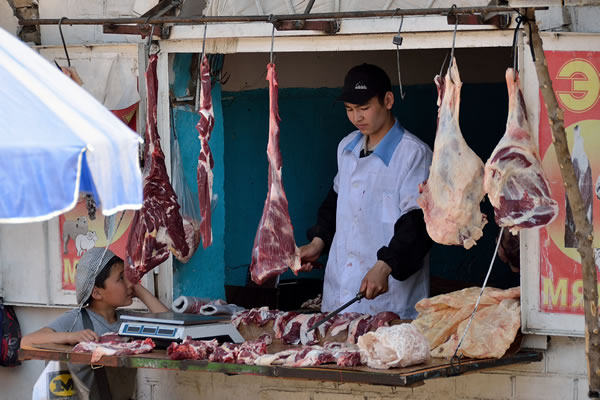 |
|
Everything is on sale ... as long as it is sheep |
|
The main goal of the Silk Road was to trade with each other. The Chinese wanted to have horses, gold, silver, jade, wool and coloured glass, while the civilisations in the west like to have silk, tea, paper, porcelain, spices and perfumes. But the trading resulted also in side affects, like the exchange of culture. Ideas, religions, but also technologies, ‘travelled’ from east to west and vice versa. Remarkably, the physical products mainly travelled from the east to the west, while the religious ideas travelled the other direction. Also some major technologies are known to have come to Europe over the Silk Road, like casting iron. But the most valuable technology that the Europeans got from the Chinese through the Silk Road is probably the technology to make paper. Osh, in present day Kyrgyzstan, is also a city on the ancient Silk Road. There are some proves that the city was already there in the 5th century, but you won’t see any of it in present day Osh. Like many cities in this part of the world, also Osh was devastated by Chinggis Khan in the 13th century. It is a pity that Chinggis loved to destroy all the cities that he conquered; otherwise we could probably see much more of the old Silk Road nowadays. Many cities on the Silk Road bounced back after the Chinggis Khan era, often more prosperous than ever before. All the achievements in the form of beautiful buildings that you can still see today in some of the Silk Road cities (like in Samarkand, Bukhara and Khiva in Uzbekistan), are from this second prosperous period. However, Osh is an exception; almost nothing survived. And that is a pity. |
|
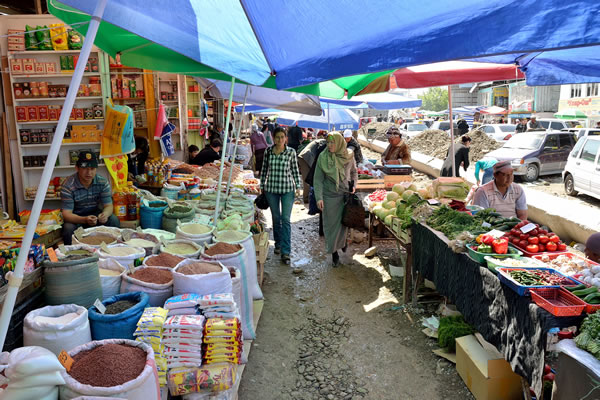 |
|
Osh's market is still a very traditional and interesting one |
|
| That does not mean that Osh isn’t a nice city to visit. We easily spent four days in the city and enjoyed it very much. It is a leafy town with some nice parks in where you can find great terraces where you can enjoy a drink or meal and observe the daily life in Osh go by. Osh is Kyrgyzstan’s second largest city (after its capital Bishkek), but it doesn’t give you that impression. People are very friendly and we never got the feeling that the city is unsafe to visit. However, it seems that there are some tensions under the surface between the different ethnic groups. Around forty percent of the population of Osh is ethnic Uzbek, who are more focussed on Uzbekistan and the rest of the Fergana Valley than on Kyrgyzstan. This strange division of the fertile Fergana Valley is the result of the strategic border politics of former Soviet Union’s leader Joseph Stalin. By creating the most strange borders in the world (take an atlas and try to figure out the borders between the ‘stan’ countries in this region), he tried to limit the power and influence of the many ethnic groups that live in Central Asia. In 1990 and again in June 2010, civil unrest took place, resulting in around 200 deaths and over 200,000 displaced people.
The peace seems to have returned to the region, but it is always difficult for a traveller to judge what the real situation is. But as long as the region is peaceful, Osh is a great destination to visit. And because of the fact that the city is on the crossroad of many routes in this mountainous region, it is probably also a place that is difficult to avoid, like in the old days of the Silk Road. And as we said before, that isn’t really necessary because Osh is a pleasant place to visit, with an incredible Central Asian market. And if this isn’t enough to convince you to come here, than the small California restaurant probably is, because this place serves the best fresh salads on the whole Silk Road … and beyond. |
|
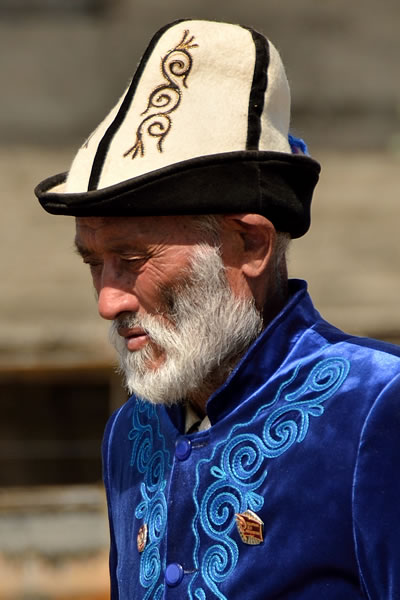 |
|
Different etnic groups with different clothing styles |
|
 |
|
Children have fun in one of Osh's parks |
|
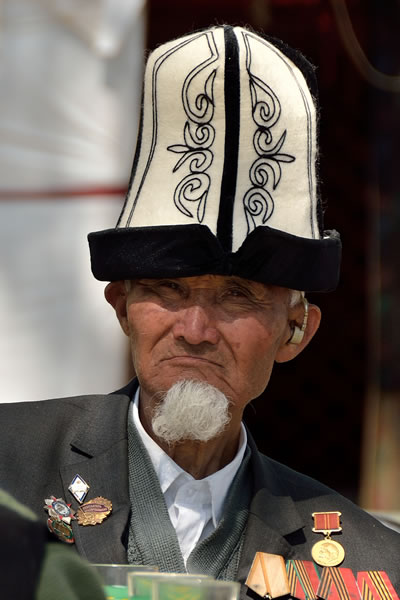 |
|
Traditional man with a load of medals |
|
 |
|
Only the best products are good enough |
|
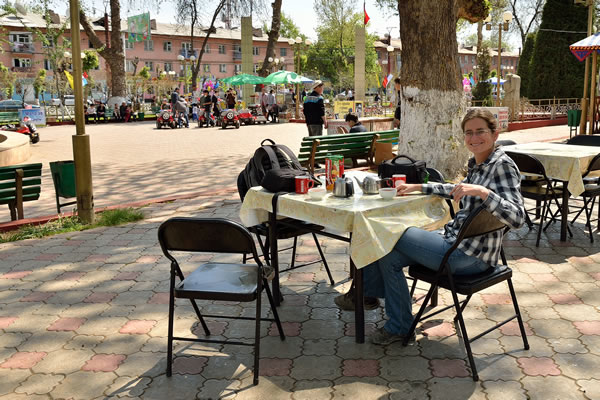 |
|
Time to relax on one of the many terraces in Osh © copyright - Babakoto.eu / 2013 |
|